RainMaker has shared information about social media engagement measurements. So marketers and brands can measure likes, shares, comments and number of followers. To know the level of your brand in the social media world. in order to be used in various strategic plans
The formula for calculating the amount of engagement in social media has many formulas to use. because of the measurement value of various posts Will create value for the content market and know whether their work has achieved the goal or not. At least we need to know the standards used to measure this engagement first.

However, the standards used to measure the engagement will consist of
- Reactions
- Likes
- Comments
- Shares
- Saves
- Messengers
- Direct Messages
- Mentions (Tagged / Untagged)
- Click
- Profile Visits
- Retweets
- Replies
- Quote Tweets
- Sticker Taps
- Link Clicks
- Views
by these details It can help change perceptions between brands and target groups. Including creating opportunities to reach new target groups. However, brands and marketers need to understand their core audience first. and should know the appropriate timeline for posting, for example, when should I post? When is the best time to post an engagement?
And today, thumbsup will introduce 6 interesting formula calculation methods for you.
It is the most popular formula that is used to calculate engagement because it can be measured from the people who engage with us directly after seeing the content. It works well with single posts and calculates the average of multiple posts.
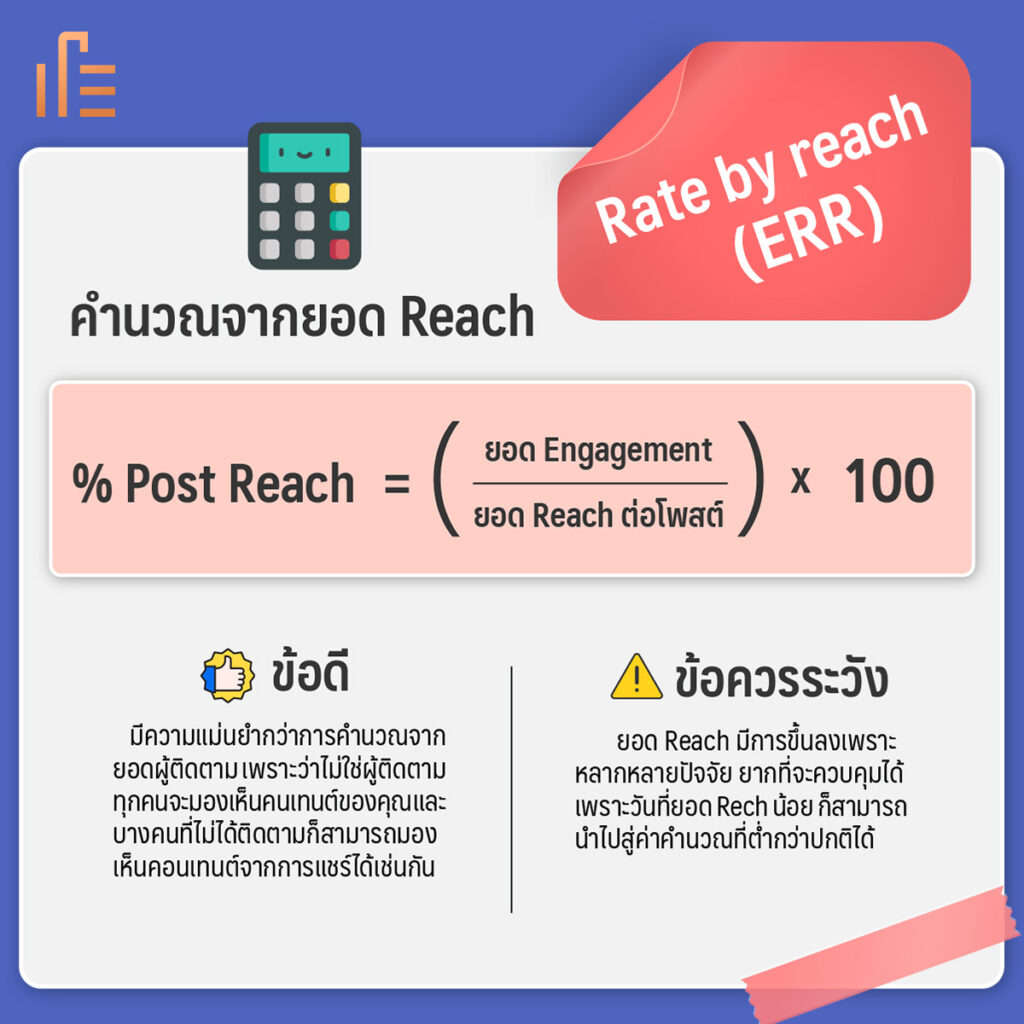
- Advantages: Calculate reach more accurately than calculating follower count.
- Disadvantages: Reach may fluctuate due to many factors. making it difficult to control
Rate by Posts (ER Post): Calculated from the number of posts.
This formula is similar to the Reach calculation, except it changes from Reach to Follower calculation. It will tell you how many followers you have. How many people can create an engagement for the content?
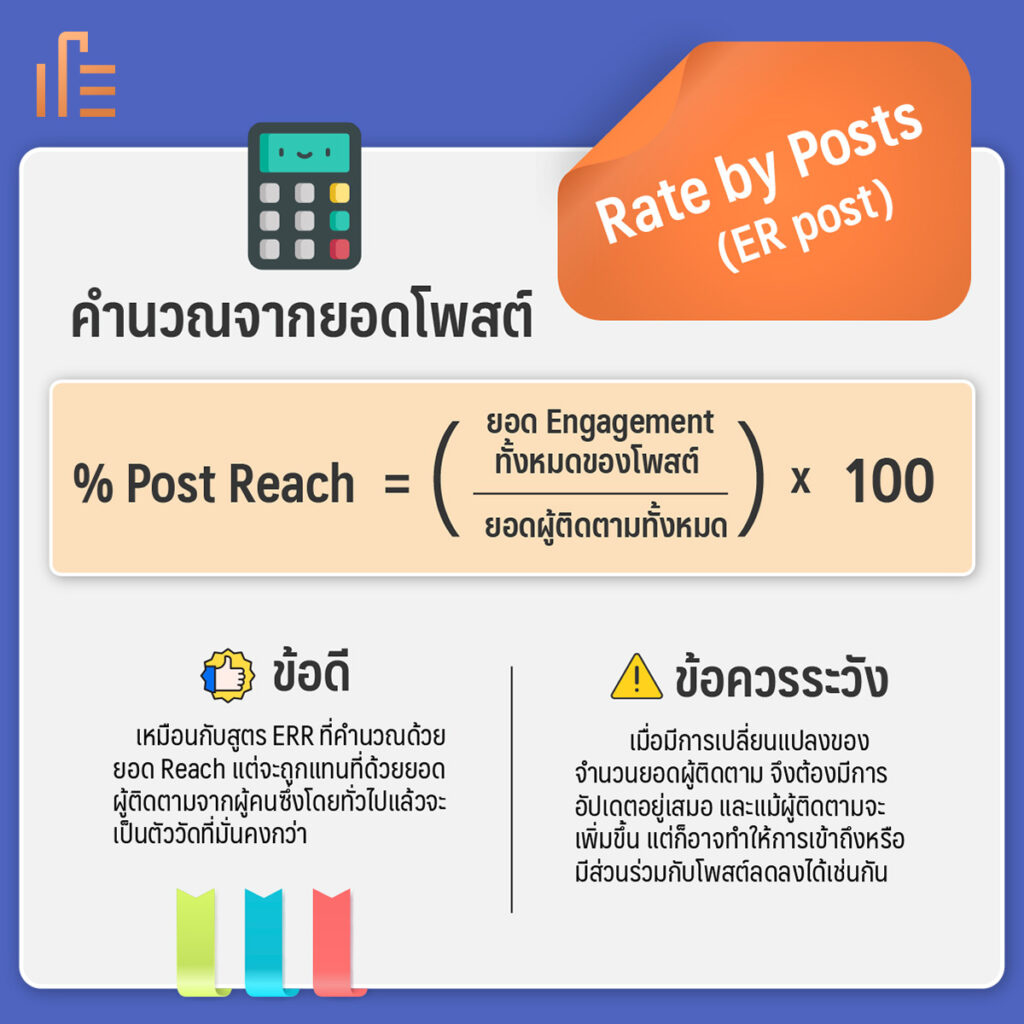
- Pros: ERR calculations are a good way to tell how many people saw a post. Instead, this formula is replaced with viewership subscriptions. which will be a more accurate measurement
- Disadvantages: The amount calculation with this formula must be updated regularly. When there is a change in the number of followers increasing or decreasing This can also lead to a decrease in post engagement.
Rate by impressions (ER impressions) : Calculated from the total visibility
The number of impressions lets you know how many people see your content even if it’s repeat viewing. Because the calculation with this formula must count the peak or frequency that people see.
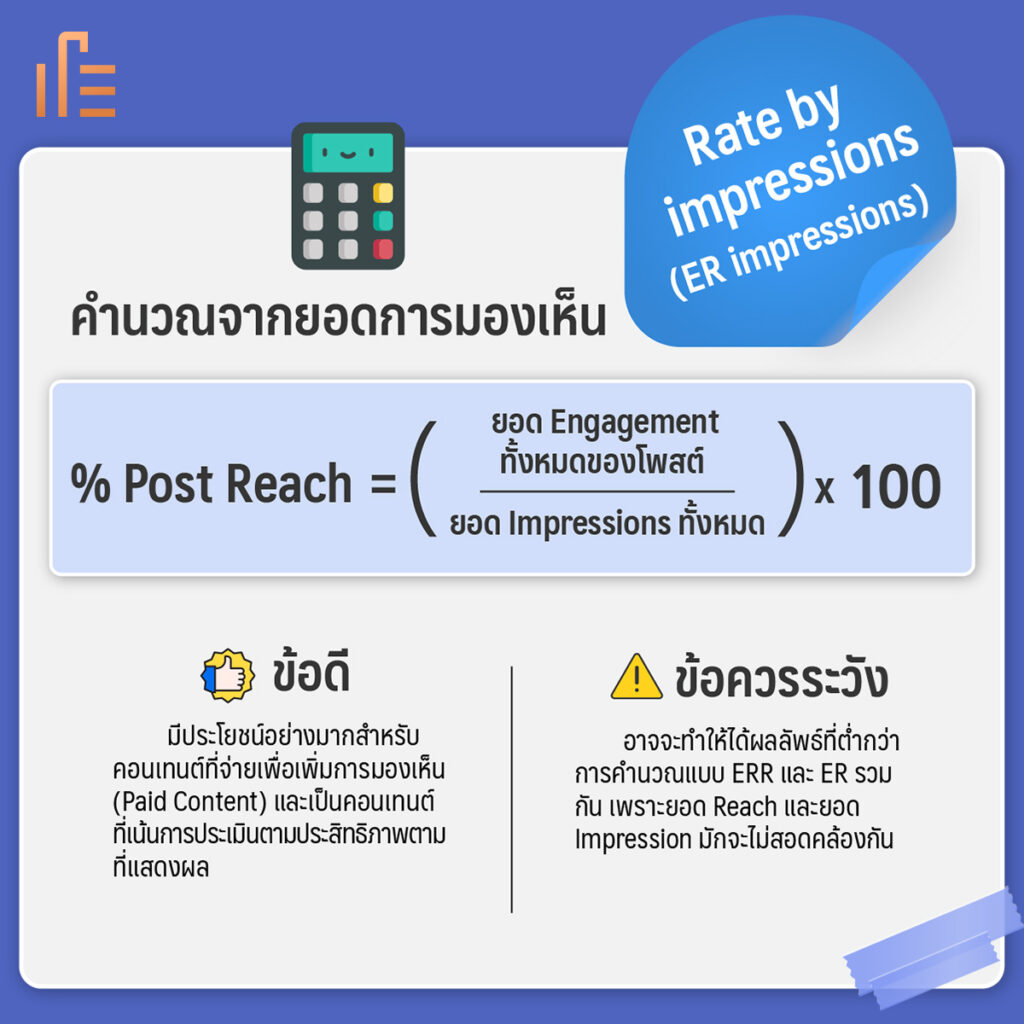
- Advantages: This formula is suitable for content that is paid to increase visibility (Paid Content) and content that focuses on evaluation based on impressions.
- Disadvantages: Although this formula is a standing area formula to measure impression results, it may give lower results than ERR and ER calculations combined because reach and impression peaks are often inconsistent.
Daily engagement Rate (Daily ER): Calculated from daily sales.
Although the engagement is calculated according to the amount we see The calculation is based on the number of followers who engage with our account.
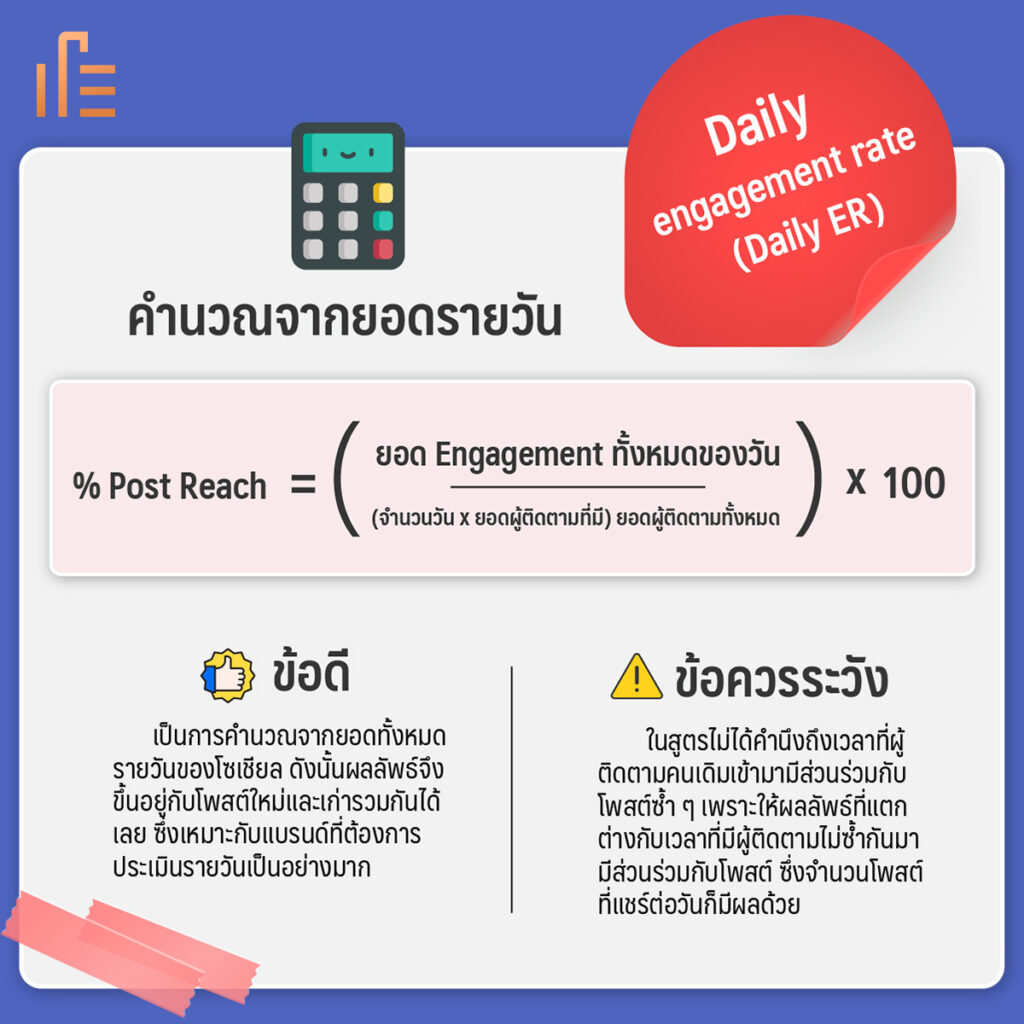
- Advantages: This formula does not only calculate posts. It’s a calculation based on the total daily social media volume, so the results are based on new and old posts combined.
- Disadvantages: The formula does not calculate the time that the same follower engages with the same post repeatedly.
Rate by Views (ER View): Calculated from the views.
If you mainly do content on video platforms should use this formula Because it will get the most accurate results in the engagement calculation.
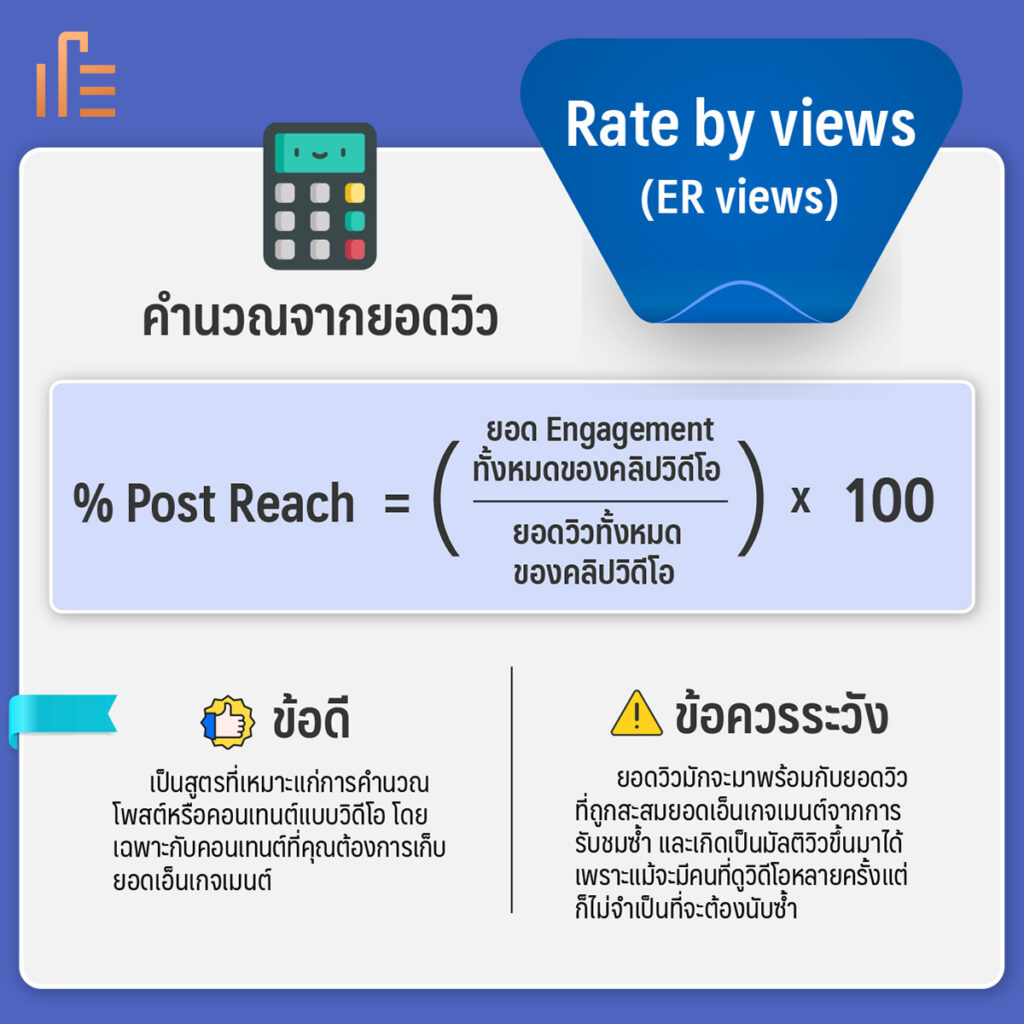
- Advantages: It is a formula that is suitable for calculating posts or video content. that you want to keep the balance of the package
- Disadvantages: Multi-views may occur from accumulating both old and new views. from multiple viewings
Factored Engagement Rate : Calculated separately.
Split-engagement calculations are more suitable for brands that want to calculate specific amounts and give more weight to certain types of assessments.
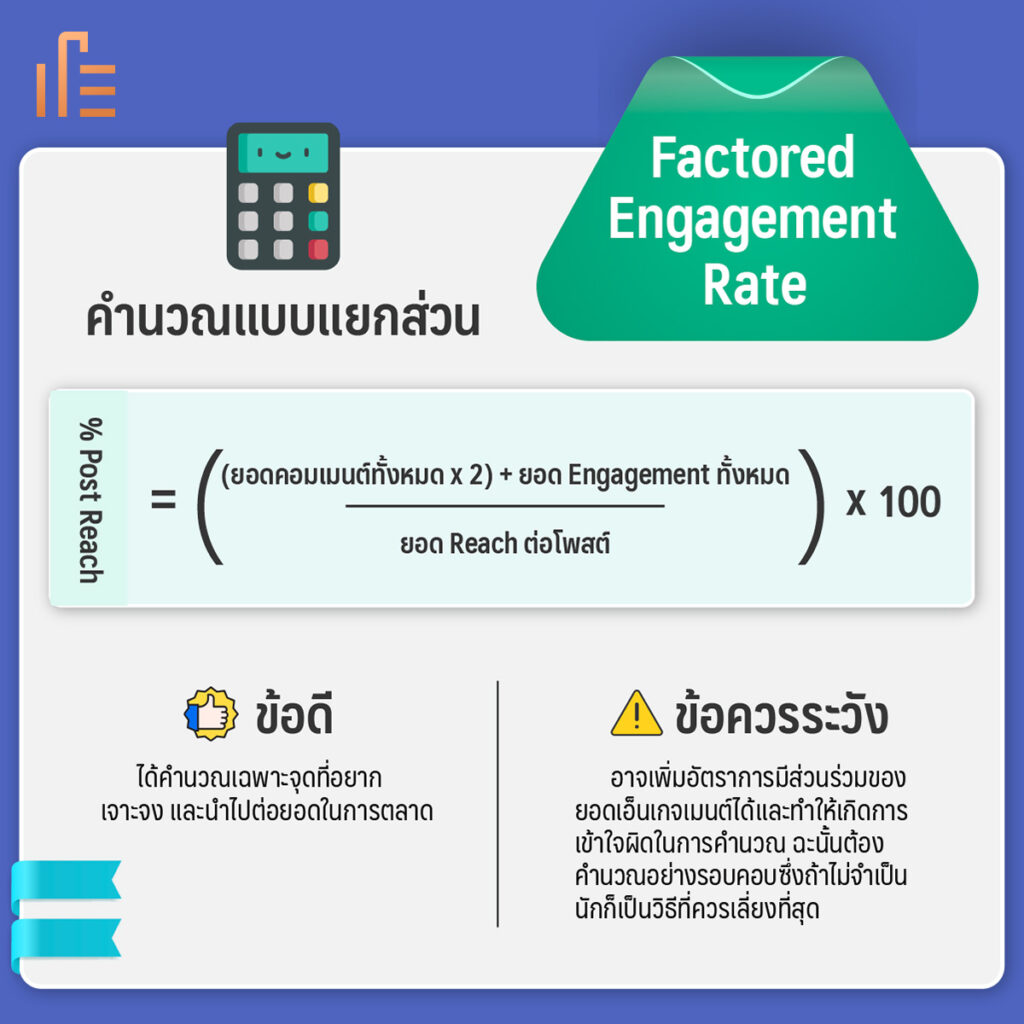
- Advantages: can be calculated in a specific way and can be further developed
- Disadvantages: This formula may increase the contribution of the engagement balance and cause calculation errors.
For brands that have never calculated the amount of engagement before and don’t know where to start. Try these formulas and apply the results to plan your future social media strategy.
source :



